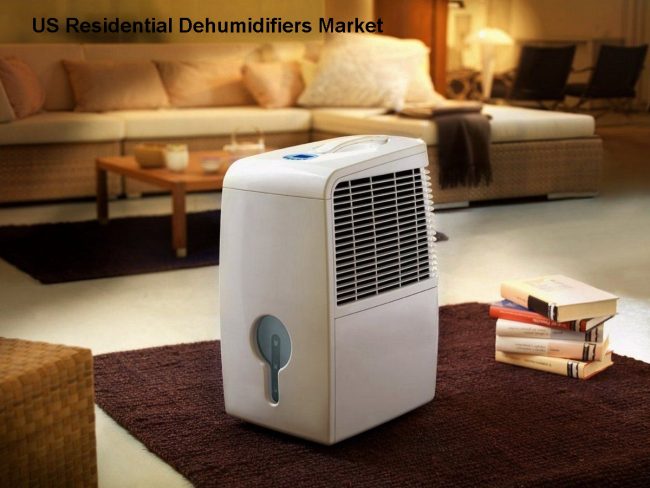The air we breathe indoors significantly impacts our health and comfort. In the United States, particularly in hot and humid regions, maintaining optimal indoor air quality can be a challenge. This is where dehumidifiers come in – they act as silent warriors, battling excess moisture to create a healthier and more comfortable living environment.
This article delves into the US residential dehumidifier market, exploring its current landscape, growth drivers, and future trends.
Get Free Sample Report: https://www.metastatinsight.com/request-sample/2550
US Residential Dehumidifiers Market Report Highlights
| Aspects | Details |
| Market Size By 2033 | USD 1.36 billion |
| Growth Rate | CAGR of 5.30 % |
| Forecast period | 2024 – 2033 |
| By Type | Whole House Dehumidifier Portable Dehumidifier Crawl Space & Basement Dehumidifier |
| By Whole House Dehumidifiers Type | Split-System Whole-House Dehumidifiers Ducted Whole-House Dehumidifiers Ventilating Whole-House Dehumidifiers |
| By Region | Northeast Southeast Midwest Southwest West Coastal Areas |
| By Distribution Channel | Online Offline |
| By Region | North America (U.S., Canada, Mexico) Europe (Germany, UK, France, Italy, Spain, Rest of Europe) Asia-Pacific (China, Japan, India, South Korea, Indonesia, Rest of Asia-Pacific) LAMEA (Brazil, UAE, Saudi Arabia, South Africa, Rest of LAMEA) |
| Key Market Players | Aprilaire Honeywell International Inc. Carrier US Corporation Innovative Dehumidifier Systems Therma-Stor (Santa Fe) Lennox International, Inc. American Standard Heating and Air Conditioning Daikin Comfort Technologies North America, Inc. Johnson Controls (York) General Filters, Inc. Trane Technologies Plc NingBo Deye Inverter Technology Co. Ltd. (Deye) Frigidaire Appliance Company Alorair Solutions Inc. Legend Brands . |
Setting the Scene: Market Size and Growth Trajectory
The US residential dehumidifier market is experiencing steady growth. According to Mordor Intelligence, the market size was estimated at USD 0.82 billion in 2023 and is projected to reach USD 1.36 billion by 2033, reflecting a Compound Annual Growth Rate (CAGR) of 5.30%. This growth can be attributed to several factors.
Factors Driving the US Residential Dehumidifier Market
- Rising Awareness of Health Benefits: People are becoming increasingly aware of the health risks associated with high humidity levels in homes. Excess moisture can lead to mold growth, which can trigger allergies, respiratory problems, and even asthma. Dehumidifiers help maintain optimal humidity levels, creating a healthier indoor environment.
- Focus on Indoor Air Quality: Consumers are prioritizing good indoor air quality, and dehumidifiers play a crucial role in achieving this. By removing excess moisture, dehumidifiers not only prevent mold growth but also help reduce dust mites and other allergens, creating a more breathable and comfortable living space.
- Climate and Geographic Influences: The US has diverse climates, with some regions experiencing high humidity levels throughout the year. Southern states and coastal areas witness particularly high humidity during summers. This creates a consistent demand for dehumidifiers in these regions to enhance comfort and prevent moisture-related issues.
- Growing Construction Activity: The rise in residential construction activity across the US is another factor propelling the dehumidifier market. New homes are often built with tighter seals, leading to reduced ventilation. Dehumidifiers help address potential moisture problems in these new constructions.
- Energy Efficiency Focus: Technological advancements are leading to the development of more energy-efficient dehumidifiers. This is making them a more attractive proposition for consumers who are increasingly environmentally conscious and looking for ways to reduce energy bills.

Market Segmentation: Types and Features
The US residential dehumidifier market offers a variety of options to cater to different needs and budgets. Here’s a breakdown of the key segments:
- Dehumidifier Types:
- Desiccant Dehumidifiers: These are ideal for colder climates or situations where very low humidity levels are required. They use a desiccant material to absorb moisture from the air.
- Refrigerant Dehumidifiers: These are more common and work similarly to air conditioners. They condense moisture from the air onto coils and collect it in a tray or tank.
- Features:
- Capacity: Dehumidifiers come in various capacities, measured in pints of moisture removed per day. The capacity needed depends on the size of the space and humidity levels.
- Portability: Portable dehumidifiers offer flexibility for use in different rooms or areas of the home.
- Smart Features: Some dehumidifiers come equipped with smart features like automatic shut-off, humidity level control, and Wi-Fi connectivity for remote control.
Competitive Landscape: Major Players and Trends
The US residential dehumidifier market is a competitive landscape with several established players and emerging brands. Some of the key players include LG Electronics, Samsung Electronics, Honeywell International Inc., Midea Group, and Emerson Electric Co. These companies are constantly innovating to develop new features, improve efficiency, and cater to the evolving needs of consumers.
Here are some key trends shaping the future of the US residential dehumidifier market:
- Smart Dehumidifiers: There’s a growing demand for smart dehumidifiers that offer features like remote control, integration with smart home systems, and automated operation based on humidity levels.
- Energy Efficiency: As energy costs rise and environmental concerns increase, energy-efficient dehumidifiers will be in high demand. Manufacturers are focusing on developing models with better energy ratings and lower operating costs.
- Portable Dehumidifiers: The demand for portable dehumidifiers is expected to remain strong due to their versatility and convenience. Manufacturers are creating compact and lightweight models with improved functionality.
- Focus on Dehumidifier Maintenance: The market is likely to see a rise in awareness about the importance of dehumidifier maintenance, including filter cleaning and proper disposal of collected water. This could lead to increased demand for replacement filters and after-sales services.
Contact Us:
info@researchindustryblogs.com
COMMENTS